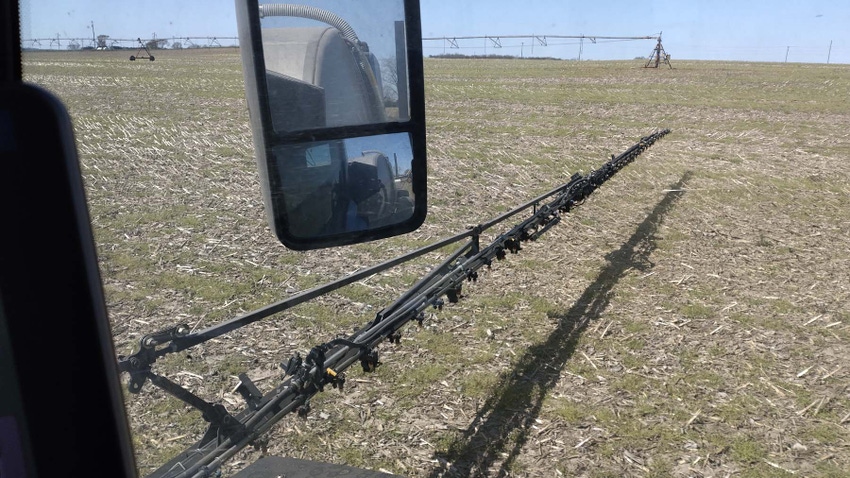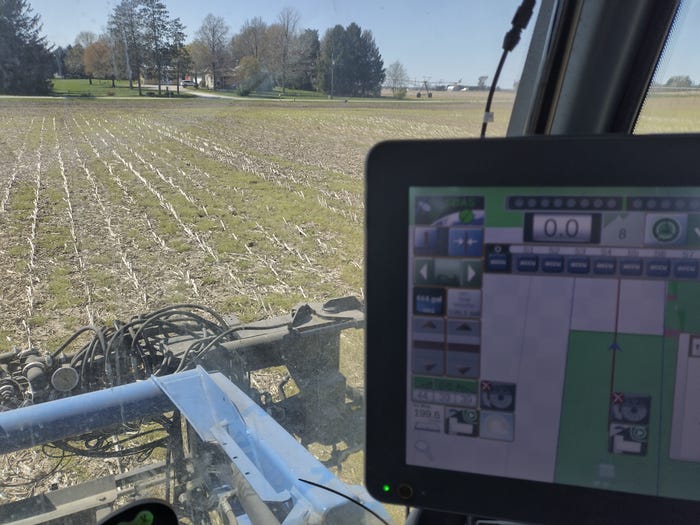
This past week was pleasantly warm, but we seem to be stuck in a bit of a wet pattern. We also had a couple of breezy days.
Nonetheless, we were able to get across a huge chunk of acres with the sprayer.
Burndown chemistry was applied to kill winter annuals that are turning fields green.
Residual herbicides were applied as well. They are the best weapon against many of the problem weeds such as Palmer amaranth, waterhemp, and marestail. Getting chemistry on early is the best option as some of the products we use cannot be applied after the crop emerges.

I’ve written in the past about how we use multiple modes of action to control weeds and fight resistance. Nothing has changed on that. We’re using three or four modes of action on these early-season trips.
Realizing that trading sprayers was not on the table last winter, we gave the sprayer some ‘love’ in the shop. We serviced it, replaced leaky air-ride air bags, removed (and sold) the chemical injection system we never used, added a toolbox, changed a bunch of nozzle bodies, replaced broken beacon lights and installed two new sets of spray tips. The machine responded well, and spraying has gone pretty smoothly.

Same charger, new story
Loading is a different story. We had some issues. Most every load is loading at the fertilizer and chemical facility at my house. That is where the mixing station is located. Long story short, the mixing station is run from a 12v car battery, and I have always used a battery maintainer to keep it charged. (It’s not recommended to use a power source to convert 120V AC to 12V DC.) Well, for some reason the charger was interfering with the flowmeter signal. I don’t know how. It was weird as it’s the same charger I used all last year. But now I know I have to unplug it during the day and plug it back in at night. As soon as I have time, I will work to find a permanent, simple solution.
Even with the cold forecast for Sunday, Monday, and Tuesday mornings, I had hoped to get both planters in the fields and tested. It rained again overnight last Friday, and that didn’t happen. Dad and Matt were busy this week fixing tile and doing other miscellaneous jobs.
Planters will roll next time fields are fit.
Read more about:
Herbicide ResistanceAbout the Author(s)
You May Also Like






